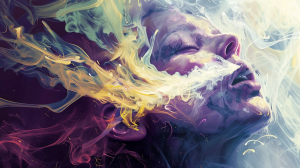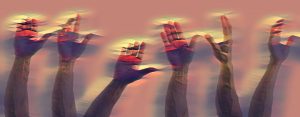
Safer Using – Piperazines
About Piperazines Piperazine derivatives (also called piperazines) are a class of drugs which are related to piperazine, a chemical used…
Psilocybin is a psychedelic drug with similar effects to LSD, but with a shorter duration (4-6 hours).1 Psilocybin is the major psychoactive component of magic mushrooms, and it is converted by the body into its active form, psilocin.2 Psilocybin can produce feelings of interconnectedness, feelings of love and peace, alterations to perception of time and space, religious and mystical-type feelings as well as meaningful insights into oneself.3,4 Hence, a psilocybin trip can be incredibly profound.3 Some people have described an experience on psilocybin as being one of the most meaningful experiences of their life.3
For at least 500 years, psilocybin-containing mushrooms have been used in Mexico and central America for religious and healing purposes.5 In 1952, the amateur mycologist Gordon Wasson documented the use of these mushrooms in Mexico and made them known to the West.5 In the sixties, Albert Hoffman—the first person to synthesise LSD—identified their main psychoactive components, psilocybin and psilocin.5
As of 1 July 2023, it is legal for authorised psychiatrists to prescribe psilocybin for treatment-resistant depression in Australia.6 Psilocybin is intended to be used alongside psychotherapy and it is only available to those who have already tried other treatments for depression.6 Psilocybin’s beneficial effect on depression is likely due to its ability to lessen rigid thinking, promote adaptability and promote change as well as its ability to cause profound mystical experiences.3,4 Its effect on depression has been described as “shaking the snow globe”, where psychedelics can disrupt “unhealthy patterns of thought and creating a space of flexibility… in which more salubrious patterns and narratives have an opportunity to coalesce as the snow slowly resettles”.7
It can be beneficial to have a tripsitter during a psychedelic experience. A tripsitter is a sober friend who assists a person taking psychedelics by giving them water, engaging in conversation when needed, helping to move them around and generally keeping a person comfortable throughout the trip.8 A tripsitter can be present in a separate room and stay mostly uninvolved until the person calls on them.8
The effects of psilocybin can depend on the mindset of the person and the setting in which the person is taking it (commonly called set and setting).7 It is important that the person feels safe in the environment, and it is best to trip around people one is familiar with. In highly stimulating environments such as music festivals, a person may need to spend time in a quiet space away from the stimulation and it can be helpful to find such an area before taking psilocybin.
People often report that it’s difficult to put the experience of psilocybin into words.3 Nevertheless, the commonly reported effects of psilocybin can include but are not limited to:1,3,4,9,10
The effects of psilocybin typically last between 4-6 hours in total.1 The onset of effects is quite variable but typically takes 20-45 minutes.1,10
People develop a tolerance to psilocybin where the desired effects are significantly diminished.11 This can take approximately four to seven days to subside.11 The tolerance also reduces the effects of other psychedelics, such as LSD and mescaline.11
Psilocybin is mostly ingested in the form of magic mushrooms. The potency of magic mushrooms can vary depending on the species, strain, growth conditions, maturity and how well they have been dried. Therefore, it can be difficult to dose mushrooms accurately and it is always recommended to start with a low dose and wait before redosing recreational drugs (start low and go slow). The following dosages are a rough guide for dried mushrooms, which are more potent by weight than wet/fresh mushrooms:1,10
LOW DOSE – 0.5-1.5 g dried mushrooms (approx. 2.5-10 mg psilocybin)
MEDIUM DOSE – 1.5-3.5 g dried mushrooms (approx. 10-25 mg psilocybin)
STRONG DOSE – 3.5+ g dried mushrooms (approx. 25+ mg psilocybin)
Certain mushroom species that grow in Australia such as Psilocybe subaeruginosa can be more potent than other species and thus require a smaller dose to achieve the same effects.12
Psilocybin has a very low toxicity, and no one has ever died from consuming psilocybin alone.13 However, taking high doses can have distressing psychological and physical effects which can include:13
Psilocybin may trigger psychosis in individuals who have existing psychological issues.13
Mixing psilocybin with cannabis or stimulants such as amphetamines can increase the risk of anxiety.1 Mixing psilocybin with tramadol is considered unsafe since it can increase the risk of seizures.1
Psilocybin-containing mushrooms grow in many parts of the world, but correctly identifying wild mushrooms is difficult. There are extremely toxic mushroom species which look like magic mushrooms, some of which can be fatal if ingested.9,13 Symptoms of mushroom poisoning can include nausea, vomiting, stomach cramps and diarrhoea and can begin up to 24 hours after ingesting a poisonous mushroom.14 If you believe you have ingested a poisonous mushroom, it’s important to seek medical attention or contact the Poisons Information Centre.14
[1] https://drugs.tripsit.me/mushrooms
[2] https://wiki.tripsit.me/wiki/Psilocybin/Psilocin
[3] https://doi.org/10.1021/acsptsci.0c00194
[4] https://doi.org/10.1177/0269881117725915
[5] https://doi.org/10.1038/s41429-020-0311-8
[6] https://www.tga.gov.au/news/news/update-mdma-and-psilocybin-access-and-safeguards-1-july-2023
[7] How to Change Your Mind, Michael Pollen
[8] https://wiki.tripsit.me/wiki/How_To_Tripsit_In_Real_Life
[9] https://wiki.tripsit.me/wiki/Mushrooms
[10] https://psychonautwiki.org/wiki/Psilocybin_mushrooms
[11] https://thethirdwave.co/psilocybin-tolerance/
[12] https://doubleblindmag.com/psilocybe-subaeruginosa/
[13] https://tripsitter.com/magic-mushrooms/overdose/
[14] https://www.health.nsw.gov.au/environment/factsheets/Pages/wild-mushroom-poisoning.aspx
Written by Darcy Lynch

About Piperazines Piperazine derivatives (also called piperazines) are a class of drugs which are related to piperazine, a chemical used…

My name is Rob. I’m 27 years old and lived in Canberra for my whole life. I started using drugs…

About Poppers Poppers (also known as alkyl nitrites) are a class of inhalant drugs used on the dance floor and…